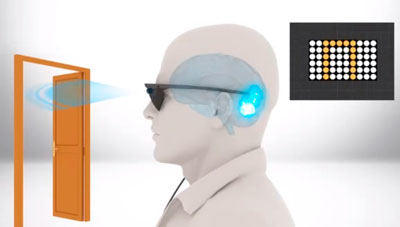 At the Eye Surgery Center of Hawaii (ESCH), Dr. Gregg Kokame of the Retina Consultants of Hawaii will perform the first implant of the Argus® II artificial retina in the Asia Pacific region on March 24, 2015. The Argus II (known as the bionic eye) is the most clinically advanced artificial retinal prosthesis ever developed. The Argus II is U.S. FDA approved and has shown dramatic clinical results to help patients with retinal blindness to be able to see again. Implantation of this novel vision restoring device has been performed at major medical centers in Europe and a few select sites in the United States. The Eye Surgery Center of Hawaii (ESCH) is the first in the Asia Pacific region, and only the second site west of the Rockies to perform this procedure.
At the Eye Surgery Center of Hawaii (ESCH), Dr. Gregg Kokame of the Retina Consultants of Hawaii will perform the first implant of the Argus® II artificial retina in the Asia Pacific region on March 24, 2015. The Argus II (known as the bionic eye) is the most clinically advanced artificial retinal prosthesis ever developed. The Argus II is U.S. FDA approved and has shown dramatic clinical results to help patients with retinal blindness to be able to see again. Implantation of this novel vision restoring device has been performed at major medical centers in Europe and a few select sites in the United States. The Eye Surgery Center of Hawaii (ESCH) is the first in the Asia Pacific region, and only the second site west of the Rockies to perform this procedure.
The Eye Surgery Center of Hawaii is the leading ophthalmology specialty surgery center focused exclusively on the surgical treatment of eye disease in Hawaii and the Asia Pacific region. A program for artificial retinal bionic implants, and for corneal transplantation, is established at the Eye Surgery Center of Hawaii to serve patients from throughout the Asia Pacific region.
What is the Argus II Retinal Prosthesis System?
The Argus II Retinal Prosthesis System (“Argus II”) is an implantable, visual prosthetic approved* to provide functional vision to those blinded by retinitis pigmentosa. Retinitis Pigmentosa (RP) is an inherited, degenerative eye disease that causes severe vision impairment and often blindness. RP is rare disease estimated to affect roughly 100,000 people in the U.S. The Argus II is the first approved retinal prosthesis in the world.
To date, the Argus II has been implanted in more than 100 individuals worldwide (pre and post approval) with over 15 commercial patients in the U.S. alone. Currently, the treatment is offered at approved centers in Canada, France, Germany, Italy, Netherlands, Saudi Arabia, Spain, Switzerland, Turkey, United Kingdom and the United States.
How Does it Work?
A miniature video camera housed in the patient’s glasses captures a scene. The video is sent to a small patient-worn computer (i.e., the video processing unit – VPU) where it is processed and transformed into instructions that are sent back to the glasses via a cable. These instructions are transmitted wirelessly to an antenna in the retinal implant. The signals are then sent to the electrode array, which emits small pulses of electricity. These pulses bypass the damaged photoreceptors and stimulate the retina’s remaining cells, which transmit the visual information along the optic nerve to the brain, creating the perception of patterns of light. Patients learn to interpret these visual patterns with their retinal implant.
Who is eligible for the Argus II?
The Argus II is indicated for use in patients with severe to profound retinitis pigmentosa with the following eligible assessment:
- Adults, age 25 years or older
- Bare light or no light perception in both eyes
- Previous history of useful form vision
To learn more or make an appointment
Patients interested in learning more about bionic retina transplantations at the Eye Surgery Center of Hawaii (ESCH) for the restoration of vision should contact: Dr. Gregg Kokame’s office at 808-487-8928.
Patients from overseas interested in bionic retina transplantation or cornea transplantation for the restoration of vision should contact: SKAI Ventures Concierge Program, Sheila Chamian at 808-380-8060 or research@retinahi.com

*HUMANITARIAN DEVICE: Authorized by Federal (U.S.) law to provide electrical stimulation of the retina to induce visual perception in blind patients with severe to profound retinitis pigmentosa and bare light or no light perception in both eyes. The effectiveness of this device for this use has not been demonstrated.